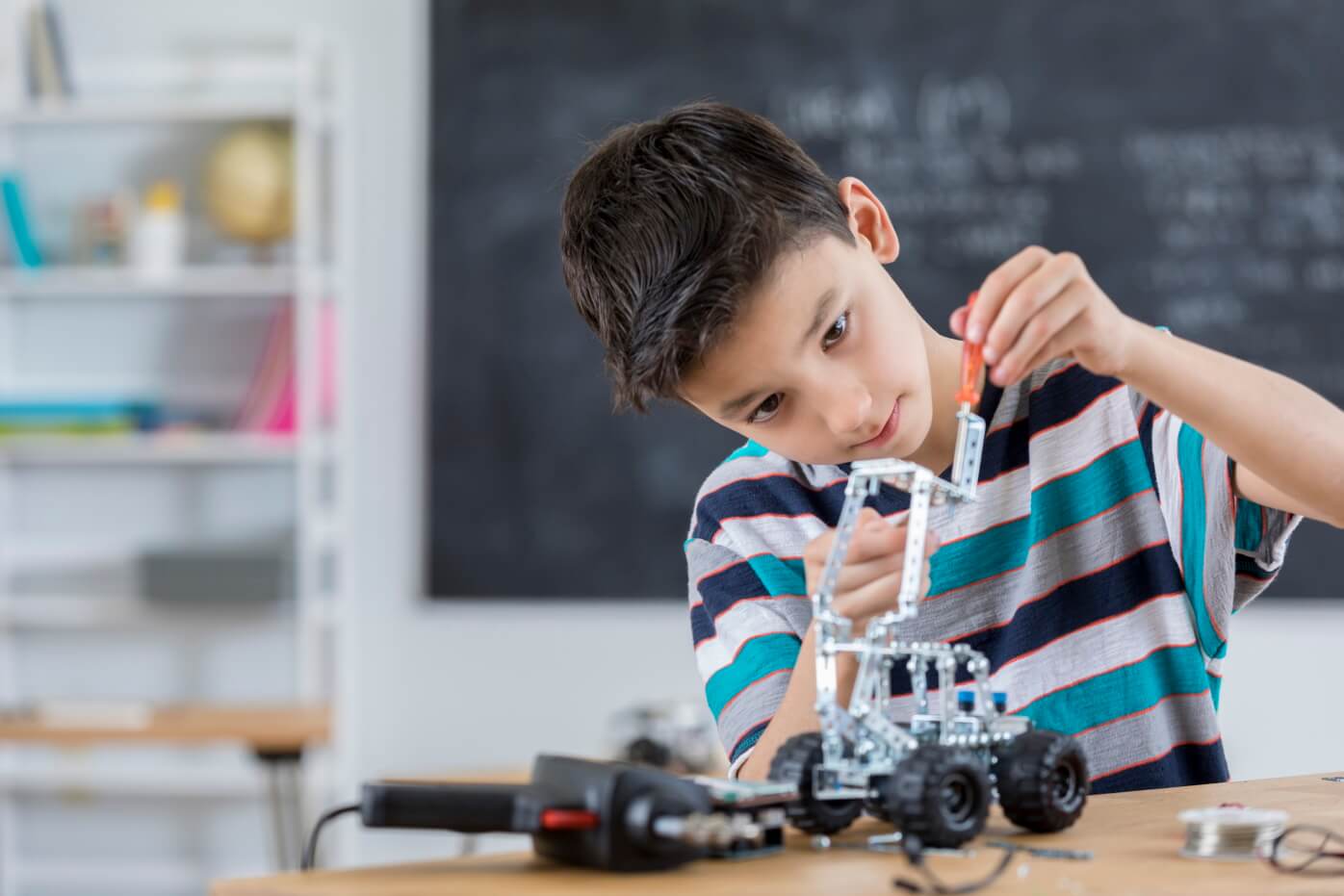
The drive to focus curricula on STEM – science, technology, engineering and mathematics – is understandable in a world where the highest-paying jobs will require scientific and technological skills. However, many educators feel that something is missing: if we concentrate exclusively on STEM subjects, we risk forgetting the human side of science.
Adding an A to the acronym is not throwing in some artistic activities to appease those who have no interest in STEM: a well-executed STEAM program fully integrates all aspects of the humanities in the curriculum and shows students that doing science is about more than having the coolest equipment and requires creativity, collaboration and critical thinking. STEAM is not a science program with some art added in for flavour: it is a way to teach students that all human knowledge is connected and no discipline can thrive without the others.
Bringing tech to the classroom
A STEAM program does not have to involve flashy, expensive tools: there are STEAM projects for children that develop problem-solving skills with nothing more than common household items and a pinch of creativity.
However, robotics and coding kits and Mixed Reality headsets are gaining ground as a way to teach science in ways a textbook cannot achieve: building a robot, conducting experiments without a lab, or taking a virtual field trip to space are all ways in which students can get their first taste of the application of science.
Providing role models
Putting the latest equipment in the students’ hands and leaving them to their own devices is not the right way to implement STEAM in your school curriculum: there are many ways to create an effective STEAM programme, but all of them require careful consideration on the part of teachers and administrators.
Technology and scientific equipment are important, but the initial wonder at having access to real robots or MR can only last so long. Without guidance, a newly introduced STEAM project will hold the students’ interest for a while, but the sense of novelty will fade: it is up to the teacher to keep the spark alive. Instructors who are less adept than the students at using a certain piece of equipment can be of no help when one of them has inquiries: teachers who are new to STEAM must first educate themselves on the devices and skills they will be teaching if they are to be effective mentors and role models.
An inspiring figure in your life can foster a long-lasting passion for STEAM subjects, particularly for students whose circumstances make them less inclined to pursue a STEAM career: STEAM programmes should be offered to all students regardless of their gender, ethnicity or economic status, and having teachers and classmates they can relate to is more important than most realise.
We are still living in a world where STEAM fields are predominantly male and white: while girls and students from ethnic minorities are generally not told directly that they are undeserving or not smart enough to succeed, female and minority attendance in STEAM subjects tends to drop over time, starting out equal in childhood and early adolescence and giving way to white male dominance in higher education. Exclusion and bias are subtler than they used to be, but they are still having an impact on education and career choices.
STEAM programmes are a chance for teachers and administrators to prove to students from all walks of life that people like them can make it big in any field, including the hottest in the job market, like science and engineering—but without ever losing sight of the ‘A’ that keeps us human.

Want to discover more STEAM resources for your classroom?
Check our products page and start your STEM lessons with RobotLAB! and our learning Platform EngageK12!
RobotLAB products Take me to Engage! K12
This article is original from Acer Education: https://eu-acerforeducation.acer.com/education-trends/fostering-steam-learning-to-better-engage-students/
